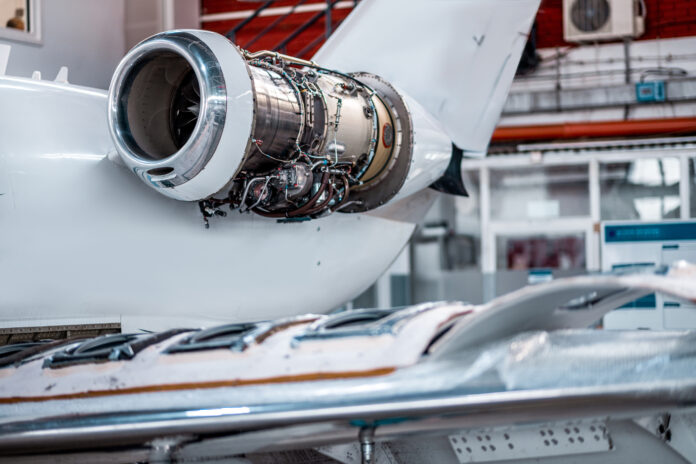
In the dynamic world of aerospace engineering, where every ounce can impact performance, efficiency, and environmental sustainability, the quest for lightweighting remains a perpetual pursuit. As we reach for the skies and beyond, engineers are continually seeking innovative solutions to reduce the weight of aerospace components without compromising on strength and durability. One such solution that has gained considerable attention is the use of nanomaterials.
Nanomaterials: A Closer Look
Nanomaterials are a class of materials that are designed, synthesized, or manipulated at the nanoscale, typically at dimensions less than 100 nanometers. At this scale, materials exhibit unique mechanical, thermal, electrical, and optical properties that deviate significantly from their bulk counterparts. These properties are harnessed for their various applications in aerospace lightweighting.
Nanocomposites for Lightweighting
One of the most promising applications of nanomaterials in aerospace is in the development of nanocomposites. Nanocomposites are materials that combine a matrix material (typically a polymer or metal) with nanoscale reinforcements (such as carbon nanotubes, graphene, or nanoclays). These reinforcements provide enhanced mechanical properties while maintaining a lightweight profile.
For example, carbon nanotubes (CNTs) are renowned for their exceptional strength-to-weight ratio. When incorporated into aerospace composites, CNTs significantly increase material strength and stiffness.
Similarly, graphene, a single layer of carbon atoms arranged in a hexagonal lattice, offers excellent mechanical properties and electrical conductivity, making it a sought-after candidate for aerospace applications.
Aerospace Applications
Nanomaterials have ushered in a new era in aerospace engineering, propelling the industry towards enhanced performance, fuel efficiency, and durability. These remarkable materials have found their way into various critical components of both aircraft and spacecraft, where their applications contribute significantly to the aerospace sector’s ongoing pursuit of excellence. Below, we delve deeper into these aerospace applications, shedding light on how nanomaterials are driving innovation and reshaping the industry.
Structural Components
One of the most groundbreaking applications of nanomaterials in aerospace lies in the development of advanced structural components. Nanocomposites, engineered at the nanoscale, are skillfully integrated into key aircraft parts such as fuselages, wings, and landing gear. Their primary role is to reduce the overall weight of these components while preserving their structural integrity. This remarkable feat not only lightens the load for aircraft but also significantly extends their operational lifespan. The result? Enhanced fuel efficiency, reduced emissions, and a profound impact on the overall sustainability of aviation.
Spacecraft Heat Shields
For spacecraft entering the Earth’s atmosphere or any other celestial body, the re-entry phase can subject them to extreme temperatures. Nanomaterials, particularly graphene and carbon nanotubes, are the guardians of these spacecraft. Integrated into the heat shields, they provide exceptional heat resistance. These nanomaterial-reinforced shields protect spacecraft and their occupants from the blistering heat generated during re-entry. By withstanding these inferno-like conditions, they ensure the safe return of astronauts and the protection of valuable cargo.
Propulsion Systems
In the realm of rocketry, where every gram counts, lightweight yet durable materials are nothing short of essential. Nanomaterials come to the forefront, aiding in the construction of propulsion systems that are not only featherlight but also unyielding in terms of reliability and safety. The reduction in weight directly contributes to enhanced rocket performance and efficiency. Nanomaterials, such as carbon nanotubes, are vital components in solid rocket propellants, reducing their density and increasing thrust. The result is rockets that deliver payloads into orbit more efficiently, reducing costs and environmental impact.
Sensors and Electronics
In an era where connectivity and precision are paramount, nanomaterials serve as the linchpin for advanced aerospace sensors and electronics. Their exceptional electrical conductivity makes them ideal for the creation of highly responsive and efficient sensors that are vital for aerospace applications. Whether it’s for navigation, communication, or data collection, nanomaterials are enhancing the performance and reliability of these critical systems. These advanced sensors ensure that aircraft and spacecraft are not only safer but also capable of delivering unparalleled performance.
Solar Cells
Aerospace missions beyond Earth’s atmosphere require a reliable and efficient power source. Nanomaterials are at the forefront of this revolution, playing a pivotal role in the development of highly efficient solar cells. These cells, often used in space missions, must be both lightweight and capable of generating power efficiently in the vacuum of space. Nanomaterials, including specialized nanocrystalline materials, have enabled the creation of solar cells that are up to the task. These cells ensure that spacecraft are powered adequately, making extended missions and deeper space exploration a reality.
Challenges and Opportunities
Nanomaterials are employed in the development of highly efficient solar cells for space missions, where weight and power generation are critical considerations.
While the potential benefits of nanomaterials in aerospace are immense, there are challenges to address. These include scaling up production, ensuring uniform dispersion of nanoscale reinforcements, and addressing safety and environmental concerns. Researchers and industry leaders are actively addressing these challenges and seeking solutions to harness the full potential of nanomaterials.
As the aerospace industry strives for sustainability and efficiency, nanomaterials offer an exciting avenue for lightweighting and performance enhancement. Their use in aircraft and spacecraft components continues to evolve, with ongoing research and innovation paving the way for a future of lighter, more efficient, and environmentally responsible air and space travel.
In the quest for aerospace lightweighting, nanomaterials are more than just lightweight contenders; they are transformative catalysts for the industry, redefining the limits of what is possible in the world of aviation and space exploration. The sky, and perhaps the stars, are no longer the limit as aerospace engineers continue to explore the vast potential of nanomaterials.




